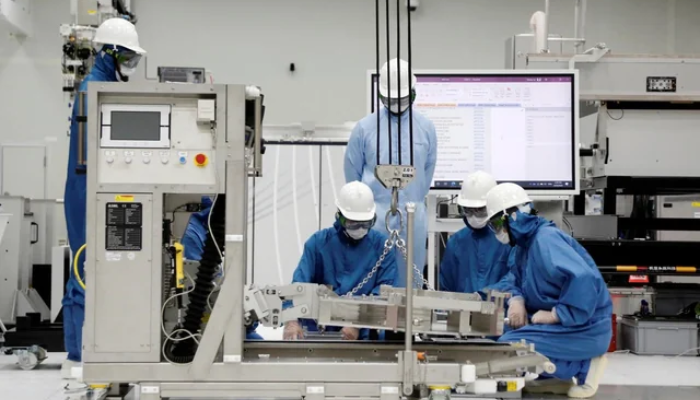Adlogic technology is rapidly becoming a game-changer in the digital marketing space. As brands compete for attention in an oversaturated online world, this advanced advertising solution offers a smarter way to create, manage, and optimize ad campaigns in real time.
With intelligent automation, data-driven strategies, and unparalleled customization, adlogic technology helps marketers save time while increasing return on investment (ROI). This article dives deep into how this innovative system is transforming the digital advertising landscape and why businesses should embrace it now.
What Is Adlogic Technology?
Adlogic technology refers to a form of automated advertising management that utilizes artificial intelligence (AI), machine learning (ML), and data analytics to streamline digital ad operations. It helps businesses deliver the right message to the right audience at the right time—without constant manual input. This technology enhances the decision-making process by analyzing large datasets, testing ad variations, and making real-time adjustments to maximize campaign performance.
Unlike traditional advertising methods, which often involve manual A/B testing and audience targeting, adlogic technology enables dynamic content delivery based on real-time user behavior. It integrates multiple ad channels—such as Google Ads, Facebook, and programmatic platforms—into one centralized system, allowing marketers to manage all aspects of their campaigns from a single dashboard.
Why It Matters
In today’s fast-paced digital world, speed and precision are everything. Adlogic technology removes human guesswork and replaces it with smart algorithms that continually learn and improve. This means higher click-through rates (CTR), better engagement, and significantly lower ad spend waste. The result? More efficient campaigns and a better bottom line for businesses of all sizes.
How Adlogic Technology Works
At its core, adlogic technology relies on real-time data analysis and automation to make advertising more intelligent. The system gathers information from various sources—such as user demographics, browsing history, and engagement metrics—and uses predictive algorithms to determine which ad content will perform best for each user.
These automated systems use machine learning to adapt campaign strategies based on performance. For example, if a particular image or message is performing better with a specific demographic, the system can automatically allocate more budget to that version. This form of real-time optimization ensures that campaigns remain effective even as market conditions and user behavior change.
Key Components
Some of the key components of adlogic technology include:
- AI-Powered Audience Segmentation: Automatically divides users into hyper-specific target groups based on real-time behavior.
- Creative Optimization: Tests and adjusts images, headlines, and CTAs without manual input.
- Multi-Channel Integration: Synchronizes advertising efforts across Google, social media, and display networks.
- Performance Analytics: Provides actionable insights through clear dashboards and visual reports.
These tools not only improve efficiency but also create a seamless and scalable advertising ecosystem for marketers.
Benefits of Using Adlogic Technology
The benefits of adlogic technology are vast, especially for businesses looking to scale their advertising efforts without expanding their marketing teams. One of the most significant advantages is time savings—campaigns that would traditionally take days or weeks to test and optimize can now be adjusted in minutes through automation.
Another crucial benefit is cost-efficiency. By using data to optimize campaigns in real time, businesses can reduce wasted ad spend. Instead of guessing which ads work, marketers can rely on analytics and automation to ensure their money is spent on high-performing content.
Enhanced User Experience and ROI
Adlogic technology also improves the user experience. By delivering more relevant ads to users, it increases engagement rates and reduces the annoyance factor commonly associated with digital advertising. The more personalized an ad is, the more likely it is to convert—and personalization is where adlogic truly shines.
Moreover, higher relevance translates into better ROI (Return on Investment). Businesses using adlogic technology often see a significant boost in their conversion rates, customer retention, and overall ad performance.
Use Cases and Real-World Applications
Adlogic technology is already being used across a variety of industries—from retail and e-commerce to travel, finance, and entertainment. For example, a fashion e-commerce company might use adlogic to automatically showcase seasonal products to customers who’ve recently browsed similar items, increasing the likelihood of conversion.
In the travel industry, businesses can create real-time, location-based campaigns that target users with vacation packages or hotel discounts as they plan their next trip. Similarly, in the financial sector, banks and fintech companies use adlogic tools to personalize offers for loans or investment plans based on user behavior and credit profiles.
Case Studies
- Retail: A global fashion retailer increased its sales by 37% after implementing adlogic tools for real-time personalization and automated bidding strategies.
- SaaS Marketing: A software company reduced its cost-per-acquisition (CPA) by 42% by letting adlogic systems test multiple ad versions simultaneously and focus on top performers.
- Healthcare: Clinics used adlogic to send appointment reminders and health promotions targeted by age, location, and medical history, leading to increased appointment bookings.
These examples show how flexible and powerful adlogic technology can be across multiple use cases.
Future Trends in Adlogic Technology
The future of adlogic technology looks incredibly promising as it continues to evolve alongside advances in artificial intelligence and big data. One significant trend is hyper-personalization, where ads become so tailored that they feel like organic content to the viewer. This level of personalization will only be possible through more advanced AI models and real-time contextual data analysis.
Another key trend is the integration of voice and visual search into advertising platforms. As more users adopt smart speakers and visual-based platforms like Pinterest and Instagram, adlogic systems will adapt to deliver ads that align with voice queries and image-based searches.
Ethical Advertising and Privacy
With growing concerns around data privacy, future versions of adlogic will need to balance personalization with compliance. New frameworks, such as privacy-first ad targeting, are being developed to ensure ethical use of user data. Technologies like federated learning and on-device data processing will allow systems to remain effective while protecting user privacy.
In short, adlogic technology will continue to shape how marketers think about ads—not just as content but as personalized, automated experiences.
Conclusion
Adlogic technology is more than a buzzword—it’s the future of digital advertising. From campaign automation and real-time analytics to hyper-targeted personalization, this technology is making marketing smarter, faster, and more effective. Businesses that adopt adlogic solutions are better equipped to compete in a crowded digital marketplace, delivering engaging content that resonates with audiences and drives meaningful results.
Whether you’re a small business owner or a large enterprise marketer, embracing adlogic technology could be the smartest investment you make in your advertising strategy.
Frequently Asked Questions (FAQs)
1. What is adlogic technology?
Adlogic technology is an AI-powered advertising system that automates ad creation, targeting, and optimization in real time.
2. How does adlogic technology help marketers?
It helps by improving ad efficiency, reducing manual work, optimizing in real time, and increasing return on investment.
3. Is adlogic technology only for big companies?
No, businesses of all sizes can use adlogic tools, especially with scalable platforms available for small to mid-sized companies.
4. What types of ads can adlogic manage?
It can manage display ads, search ads, video ads, and social media ads across multiple platforms like Google, Facebook, and Instagram.
5. Can adlogic technology integrate with existing CRM tools?
Yes, many adlogic systems offer CRM and API integrations to streamline audience targeting and data analysis.
6. How does adlogic improve user experience?
By delivering personalized and relevant content to users, which leads to better engagement and fewer irrelevant ads.
7. Is adlogic technology safe and compliant with privacy laws?
Yes, modern adlogic platforms comply with GDPR, CCPA, and other data privacy laws through ethical data practices.
8. What industries benefit most from adlogic technology?
Retail, travel, healthcare, finance, education, and SaaS industries are some of the top adopters of this technology.
9. Do I need technical skills to use adlogic tools?
Not necessarily. Many platforms are designed to be user-friendly with drag-and-drop interfaces and prebuilt templates.
10. How can I get started with adlogic technology?
You can begin by researching platforms that offer adlogic services, scheduling a demo, and integrating it into your current marketing workflow.



